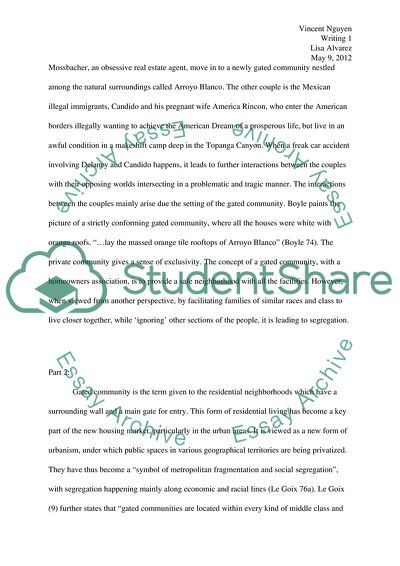Cite this document
(Gated Communities and Segregation in The Tortilla Curtain by T.C. Boyl Book Report/Review, n.d.)
Gated Communities and Segregation in The Tortilla Curtain by T.C. Boyl Book Report/Review. https://studentshare.org/sociology/1774741-gated-communities-and-its-effects-on-segregation-in-california
Gated Communities and Segregation in The Tortilla Curtain by T.C. Boyl Book Report/Review. https://studentshare.org/sociology/1774741-gated-communities-and-its-effects-on-segregation-in-california
(Gated Communities and Segregation in The Tortilla Curtain by T.C. Boyl Book Report/Review)
Gated Communities and Segregation in The Tortilla Curtain by T.C. Boyl Book Report/Review. https://studentshare.org/sociology/1774741-gated-communities-and-its-effects-on-segregation-in-california.
Gated Communities and Segregation in The Tortilla Curtain by T.C. Boyl Book Report/Review. https://studentshare.org/sociology/1774741-gated-communities-and-its-effects-on-segregation-in-california.
“Gated Communities and Segregation in The Tortilla Curtain by T.C. Boyl Book Report/Review”. https://studentshare.org/sociology/1774741-gated-communities-and-its-effects-on-segregation-in-california.


